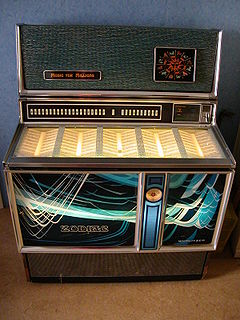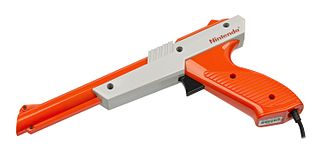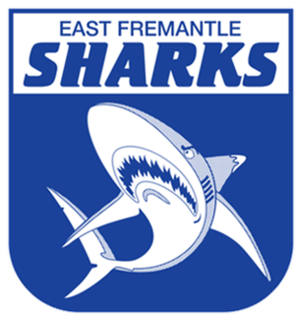Resident Evil, known in Japan as Biohazard, is a Japanese horror video game series and media franchise created by Capcom. The franchise follows people trying to survive outbreaks of zombies and other monsters created mainly by the pharmaceutical company Umbrella Corporation. The game series consists of survival horror, third-person shooter, and first-person shooter games. The franchise has expanded into a live-action film series, animated films, television, comic books, novels, audio dramas, and other media and merchandise.

The Magnavox Odyssey is the first commercial home video game console. The hardware was designed by a small team led by Ralph H. Baer at Sanders Associates, while Magnavox completed development and released it in the United States in September 1972 and overseas the following year. The Odyssey consists of a white, black, and brown box that connects to a television set, and two rectangular controllers attached by wires. It is capable of displaying three square dots and one line of varying height on the screen in monochrome black and white, with differing behavior for the dots depending on the game played. Players place plastic overlays on the screen to display additional visual elements for each game, and the one or two players for each game control their dots with the knobs and buttons on the controller in accordance with the rules given for the game. The console cannot generate audio or track scores. The Odyssey console came packaged with dice, paper money, and other board game paraphernalia to accompany the games, while a peripheral controller—the first video game light gun—was sold separately.

A jukebox is a partially automated music-playing device, usually a coin-operated machine, that will play a patron's selection from self-contained media. The classic jukebox has buttons, with letters and numbers on them, which are used to select a specific record. Some may use Compact Discs instead. Disc changers are similar devices that are intended for home use, are small enough to fit in a shelf, may hold up to 400 discs, and allow discs to be easily removed, replaced, and inserted by the user.

A light gun is a pointing device for computers and a control device for arcade and video games, typically shaped to resemble a pistol. In aviation and shipping, it can also be a directional signal lamp.

Guinness World Records, known from its inception in 1955 until 1999 as The Guinness Book of Records and in previous United States editions as The Guinness Book of World Records, is a reference book published annually, listing world records both of human achievements and the extremes of the natural world. The brainchild of Sir Hugh Beaver, the book was co-founded by twin brothers Norris and Ross McWhirter in Fleet Street, London, in August 1954.

The term chess prodigy refers to a young child who possesses an aptitude for the game of chess, that far exceeds what might be expected at their age. Their prodigious talent will often enable them to defeat experienced adult players and even titled chess masters. Some chess prodigies have gone on to become World Chess Champion.

Shooter games are a subgenre of action video game, which often test the player's spatial awareness, reflexes, and speed in both isolated single player or networked multiplayer environments. Shooter games encompass many subgenres that have the commonality of focusing on the actions of the avatar engaging in combat with a weapon against both code-driven NPC enemies or other avatars controlled by other players.

A television set or television receiver, more commonly called a television, TV, TV set, telly, or tele, is a device that combines a tuner, display, and loudspeakers, for the purpose of viewing and hearing television broadcasting through satellites or cables, or using it as a computer monitor. Introduced in the late 1920s in mechanical form, television sets became a popular consumer product after World War II in electronic form, using cathode ray tube (CRT) technology. The addition of color to broadcast television after 1953 further increased the popularity of television sets in the 1960s, and an outdoor antenna became a common feature of suburban homes. The ubiquitous television set became the display device for the first recorded media in the 1970s, such as Betamax, VHS and later DVD. It has been used as a display device since the first generation of home computers and dedicated video game consoles in the 1980s. By the early 2010s, flat-panel television incorporating liquid-crystal display (LCD) technology, especially LED-backlit LCD technology, largely replaced CRT and other display technologies. Modern flat panel TVs are typically capable of high-definition display and can also play content from a USB device.

WMS Industries, Inc. was an American electronic gaming and amusement manufacturer in Enterprise, Nevada. It was merged into Scientific Games in 2016. WMS's predecessor was the Williams Manufacturing Company, founded in 1943 by Harry E. Williams. However, the company that became WMS Industries was formally founded in 1974 as Williams Electronics, Inc.

Miller Lite is a 4.2% ABV American light pilsner beer sold by Molson Coors of Chicago, Illinois. The company also produces Miller Genuine Draft and Miller High Life. Miller Lite competes mainly with Anheuser-Busch's Bud Light and Coors Brewing Company Coors Light. Miller Lite is the official beer sponsor of the Dallas Cowboys, Green Bay Packers, Milwaukee Brewers, Milwaukee Bucks, and Bellator MMA.

The East Fremantle Football Club, nicknamed the Sharks, is an Australian rules football club playing in the West Australian Football League (WAFL) and WAFL Women's (WAFLW). The team's home ground is East Fremantle Oval. East Fremantle are the most successful club in WAFL history, winning 29 premierships since their entry into the competition in 1898.

Namibia Breweries Limited (NBL) is a Namibian brewery founded in 1920 when Carl List and Hermann Ohlthaver acquired four small breweries with financial difficulties. The breweries were merged under the name South West Breweries Limited (SWB). SWB changed its name to Namibia Breweries Limited when Namibia gained independence on March 21, 1990. Ohlthaver & List Group of Companies are still the majority shareholder.
Seeburg was an American design and manufacturing company of automated musical equipment, such as orchestrions, jukeboxes, and vending equipment. Prior to manufacturing their signature jukebox suite of products, Seeburg was considered to be one of the "big four" of the top coin-operated phonograph companies alongside AMI, Wurlitzer, and Rock-Ola. At the height of jukebox popularity, Seeburg machines were synonymous with the technology and a major quotidian brand of American teenage life. The company went out of business after being sold to Stern Electronics in 1982.
The history of Nintendo traces back to 1889, when it was founded to produce handmade hanafuda. Nintendo Co., Ltd. is a Japanese multinational consumer electronics company headquartered in Kyoto, Japan. It eventually became one of the most prominent figures in today's video game industry, being the world's largest video game company by revenue.

Qwak! is a single-player duck hunting light gun shooter arcade game developed by Atari and released in November 1974. In the game, ducks fly one at a time across the screen, and the player shoots at them using a light gun attached to the game cabinet. The player gets three shots per duck; ducks change direction away from missed shots and fall to the bottom of the screen when hit. A screen overlay adds images of reeds and a tree branch, and an image of a duck is added to a row at the top of the screen whenever a duck is hit. Games continue until a time limit, set by the machine operator, is reached.

Light gun shooter, also called light gun game or simply gun game, is a shooter video game genre in which the primary design element is aiming and shooting with a gun-shaped controller. Light gun shooters revolve around the protagonist shooting targets, either antagonists or inanimate objects. Light gun shooters generally feature action or horror themes and some may employ a humorous, parodic treatment of these conventions. These games typically feature "on-rails" movement, which gives the player control only over aiming; the protagonist's other movements are determined by the game. Games featuring this device are sometimes termed "rail shooters", though this term is also applied to games of other genres in which "on-rails" movement is a feature. Some, particularly later, games give the player greater control over movement and in still others the protagonist does not move at all.
The Smith & Wesson Model 317 Kit Gun is the current version of over 60 years of the company's 'kit gun' line. The current version is a light, versatile, eight-shot, double-action revolver chambered for the .22 Long Rifle cartridge, manufactured by Smith & Wesson. Due to its low weight, it can be carried for hiking or camping and used for recreational shooting, while still providing an emergency back-up in case of danger.

M-DISC is a write-once optical disc technology introduced in 2009 by Millenniata, Inc. and available as DVD and Blu-ray discs.

The cathode-ray tube amusement device is the earliest known interactive electronic game with an electronic display. The device simulates an artillery shell arcing towards targets on a cathode ray tube (CRT) screen, which is controlled by the player by adjusting knobs to change the trajectory of a CRT beam spot on the display in order to reach plastic targets overlaid on the screen. Thomas T. Goldsmith Jr. and Estle Ray Mann constructed the game from analog electronics and filed for a patent in 1947, which was issued the following year. The gaming device was never manufactured or marketed to the public, so it had no effect on the future video game industry. Under most definitions, the device is not considered a video game, as while it had an electronic display it did not run on a computing device. Therefore, despite its relevance to the early history of video games, it is not generally considered a candidate for the title of the first video game.

An arcade game or coin-op game is a coin-operated entertainment machine typically installed in public businesses such as restaurants, bars and amusement arcades. Most arcade games are presented as primarily games of skill and include arcade video games, pinball machines, electro-mechanical games, redemption games or merchandisers.













